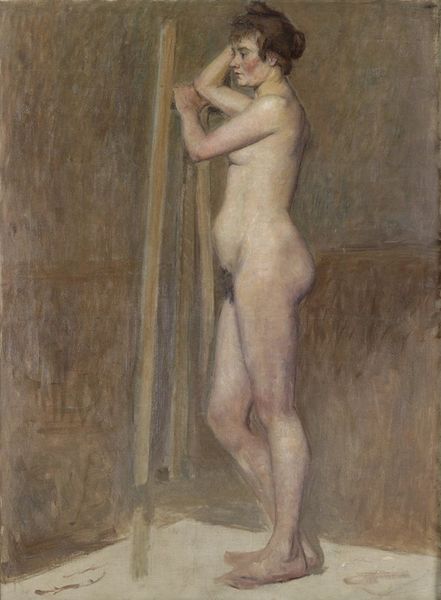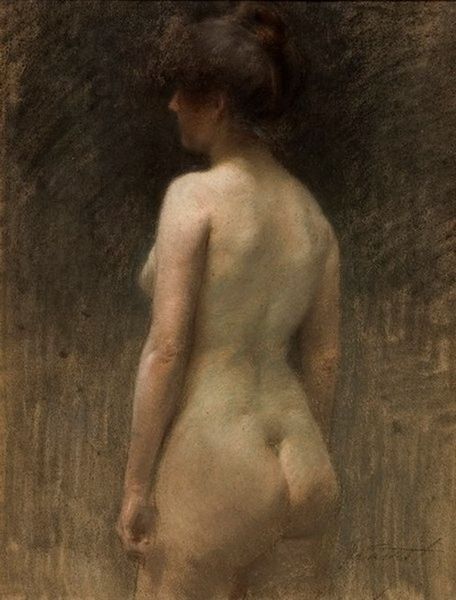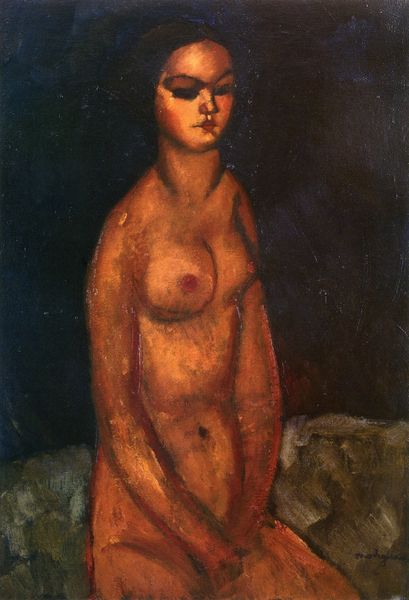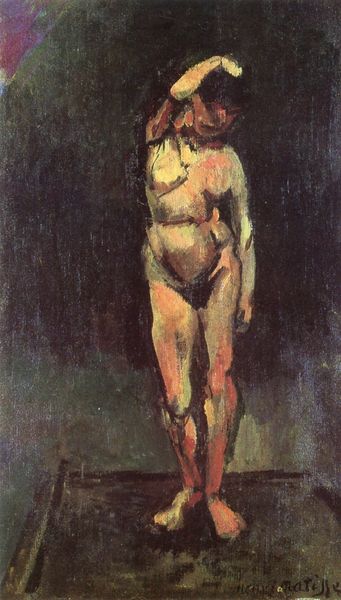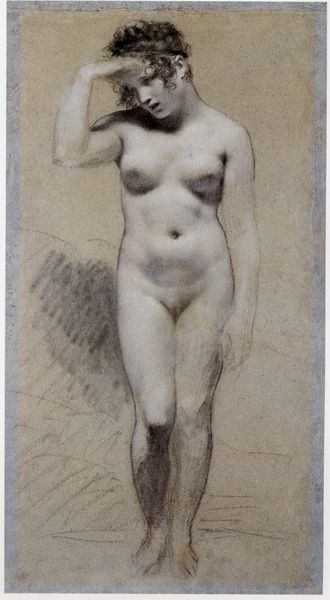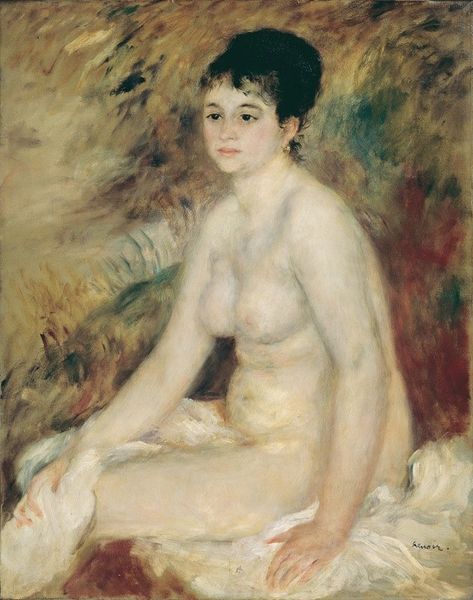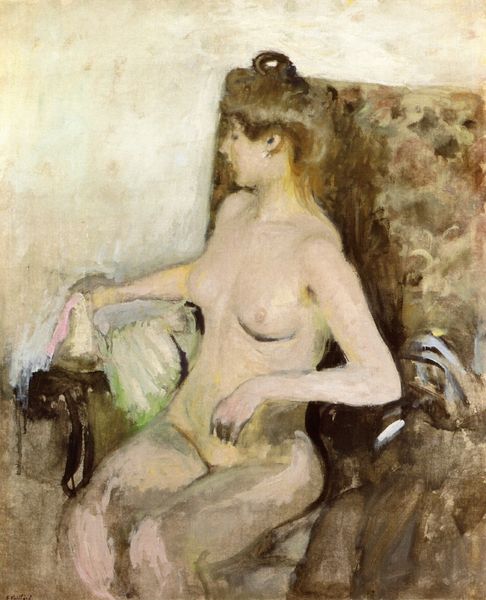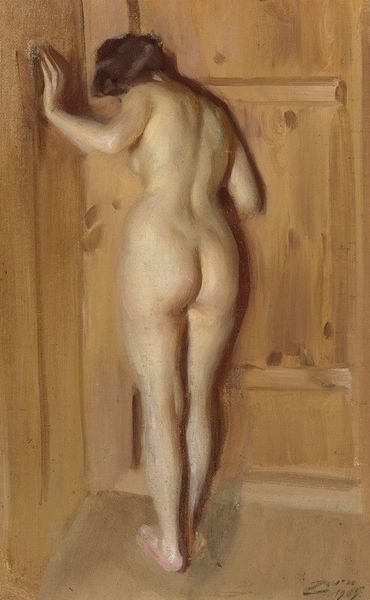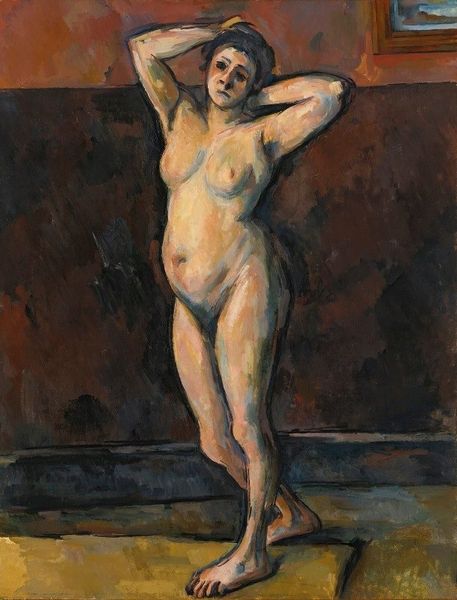
drawing, painting, oil-paint
#
portrait
#
drawing
#
painting
#
oil-paint
#
charcoal drawing
#
oil painting
#
human
#
academic-art
#
charcoal
#
nude
#
realism
Copyright: Public domain
Editor: This is Thomas Eakins's *Nude Woman Standing,* and the listing suggests it might be an oil painting, although the texture almost looks like charcoal in some areas. The composition and tonality create an interesting somberness, despite the subject matter. How do you interpret this work? Curator: The interplay of light and shadow certainly directs our attention, does it not? Notice how the artist modulates the form through subtle shifts in tone. Consider how the figure emerges from, and is almost subsumed by, the background. What compositional choices allow for this ambiguity? Editor: I guess the limited color palette contributes to the overall effect. Also, Eakins's loose brushstrokes prevent sharp outlines and instead blend the figure with the background, as you said. Does the application of paint contribute to a feeling of objectification, or, possibly, does it create some other reading of the form? Curator: Indeed, the very materiality of the paint performs a key function here. Note the thick impasto in certain areas, juxtaposed with thinly veiled washes. The physical presence of the paint invites a tactile experience, drawing us closer to the work as an object. And, given our encounter with such visible strokes, it would be interesting to understand how that relates to Eakins’ approach to the real? How is that space developed in his artistic approach, broadly speaking? Editor: That's something I'll have to reflect on. Thank you, this discussion has certainly illuminated new layers of analysis for me to consider! Curator: My pleasure. Looking at art through a formalist lens allows us to unpack complex relationships within the work itself.
Comments
No comments
Be the first to comment and join the conversation on the ultimate creative platform.

